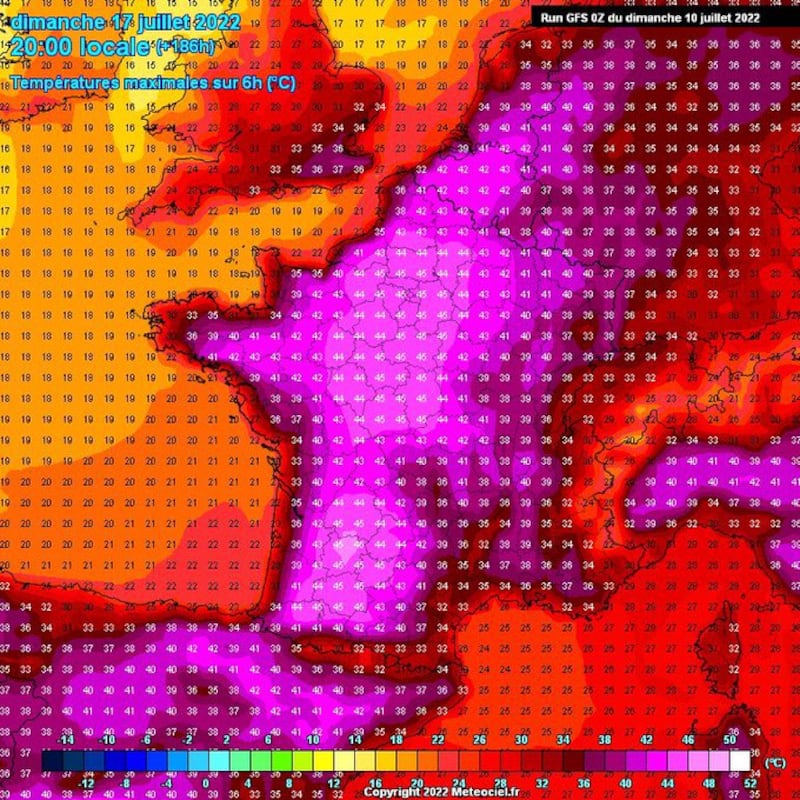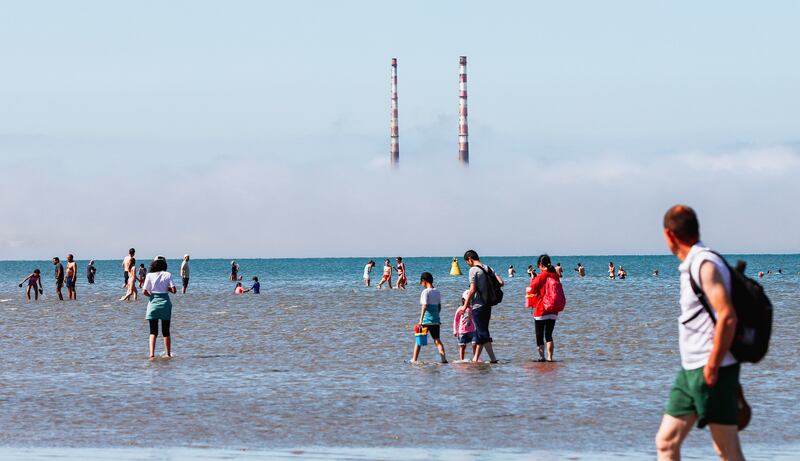The country’s highest temperature of the year, 27.4 degrees, has been recorded at the Phoenix Park in Dublin on Monday afternoon.
The latest forecast suggests there will be a divide between temperatures in the north and west and the south and east of the country for the rest of this week. Connacht and Ulster are due temperatures of 18 to 20 degrees, whereas highs in the south and east could reach 25 degrees.
Temperatures are forecast to rise again next week as a heat plume crosses northern Europe.

Ireland will be on the outer fringes of the hot air from north Africa which may bring near-record temperatures to parts of northern Europe.
[ ‘At long last’: Summer on the way as warm weather forecastOpens in new window ]
The Met Office in the UK has issued a rare extreme heat warning covering much of England and parts of Wales. Exceptionally high temperatures are possible from Sunday July 17th, lasting into early next week and possibly reaching over 35 degrees in some areas .
Forecasts show temperatures of 45 degrees in Spain, 43 degrees in France, 40 degrees in Belgium and the Netherlands

Met Éireann forecaster Emer Flood said Ireland would escape the worst of the exceptionally hot weather this brings, but that it would be very warm next weekend.
“There is going to be a hot plume of air moving over France and south-east England which could see some extreme temperatures next week,” she said. “Ireland will be on the edge of that, but temperatures will be rising into the high 20s in the southeast on Sunday.
“Sunday is looking dry and bright across the country. There is a potential for mid-20s in a lot of areas, the warmest weather is expected again in the south and east of the country.
“There is a chance of very warm temperatures in the early days of next week. It will be in the mid to late-20s, but you are unlikely to see 30 degrees.”
Irish Water said it is “closely monitoring” water supplies across the country as the weather becomes warmer throughout summer and has advised the public to “continue to be mindful of their water use to ensure we have adequate supplies”.
While the majority of water supplies were operating normally and there were no plans to introduce restrictions at this time, below average rainfall so far this year had “resulted in some smaller rural supplies coming under pressure”, particularly in the South West and Midlands.
Soil Moisture deficits in these areas are low Irish Water expects to see some small supplies come under pressure over the coming months.
Areas where Irish Water is taking actions to manage supplies at present include Inis Oirr in Galway, Whitechurch and Coppeen in Co Cork, Carron in Co Clare and Coalbrook in Co Tipperary.
Generally the large urban areas were “currently managing their supplies well through the current period,” Irish Water said in a statement.
However, this may change as the summer progresses so it was “important that everyone continues to be mindful of their water use to ensure that we have adequate supplies for everyone over the coming months.”
Tom Cuddy, Irish Water’s head of asset operations, said the public should “look at simple yet impactful ways to conserve water in the home.”
“It can sometimes be difficult to know where to start, but even small changes can make a significant difference – and we can all play our part. Taking shorter showers, only running a washing machine and dishwasher with full loads, and even turning off the tap when brushing your teeth, are just some of the simple steps we can all take today to conserve water and safeguard our precious water resources,” he said.
“To help people do this we have developed an easy-to-use conservation calculator so they can work out how much water they are currently saving and how they can conserve even more.”
The free calculator is available on the Irish Water website where there are also water saving tips.
Irish Water said it would “continue to monitor the levels at all our supplies over the coming weeks and months and take any actions that may be necessary to maintain supplies, including communicating about localised issues as they arise.”















